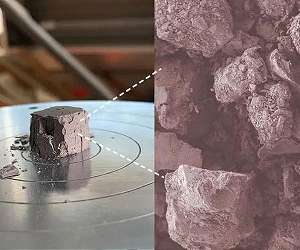A mathematical model developed by space medicine experts from The Australian National University (ANU) could be used to predict whether an astronaut can safely travel to Mars and fulfil their mission duties upon stepping foot on the Red Planet.
The ANU team simulated the impact of prolonged exposure to zero gravity on the cardiovascular system to determine whether the human body can tolerate Mars’ gravitational forces – which aren’t as strong as on Earth – without fainting or suffering a medical emergency when stepping out of a spacecraft.
The model could be used to assess the impact of short and long duration space flight on the body and could serve as another important piece of the puzzle in helping land humans on Mars.
Dr Lex van Loon, a Research Fellow from the ANU Medical School, said although there are multiple risks associated with travelling to Mars, the biggest concern is prolonged exposure to microgravity – near zero gravity – which, combined with exposure to damaging radiation from the Sun, could cause “fundamental” changes to the body.
“We know it takes about six to seven months to travel to Mars and this could cause the structure of your blood vessels or the strength of your heart to change due to the weightlessness experienced as a result of zero gravity space travel,” Dr van Loon, who is also the lead author of the paper, said.
“With the rise of commercial space flight agencies like Space X and Blue Origin, there’s more room for rich but not necessarily healthy people to go into space, so we want to use mathematical models to predict whether someone is fit to fly to Mars.”
Astrophysicist and emergency medicine registrar Dr Emma Tucker said prolonged exposure to zero gravity can cause the heart to become lazy because it doesn’t have to work as hard to overcome gravity in order to pump blood around the body.
“When you’re on Earth, gravity is pulling fluid to the bottom half of our body, which is why some people find their legs begin to swell up toward the end of the day. But when you go into space that gravitational pull disappears, which means the fluid shifts to the top half of your body and that triggers a response that fools the body into thinking there’s too much fluid,” Dr Tucker said.
“As a result, you start going to the toilet a lot, you start getting rid of extra fluid, you don’t feel thirsty and you don’t drink as much, which means you become dehydrated in space.
“This is why you might see astronauts on the news faint when they step foot on Earth again. This is quite a common occurrence as a result of space travel, and the longer you’re in space the more likely you are to collapse when you return to gravity.
“The purpose of our model is to predict, with great accuracy, whether an astronaut can safely arrive on Mars without fainting. We believe it’s possible.”
Due to a communication delay in relaying messages between Mars and Earth, astronauts must be able to out their duties without receiving immediate assistance from support crews. Dr van Loon said this window of radio silence differs depending on the alignment of the Sun, Earth and Mars in its orbit, but could last for at least 20 minutes.
“If an astronaut faints when they first step out of the spacecraft or if there’s a medical emergency, they’ll be nobody on Mars to help them,” Dr van Loon said.
“This is why we must be absolutely certain the astronaut is fit to fly and can adapt to Mars’ gravitational field. They must be able to operate effectively and efficiently with minimal support during those crucial first few minutes.”
The model uses an algorithm based on astronaut data collected from past space expeditions, including the Apollo Missions, to simulate the risks involved with travelling to Mars.
Although the space data used to inform the parameters of the model is derived from middle-aged and well-trained astronauts, the researchers hope to expand its capabilities by simulating the impact of prolonged space travel on relatively unhealthy individuals with pre-existing heart conditions. This would provide the researchers with a more holistic picture of what would happen if an “everyday” person was to travel into space.
The researchers’ work is published in the journal npj Microgravity.
Research Report:Computational modeling of orthostatic intolerance for travel to Mars
Related Links
Australian National University
Mars News and Information at MarsDaily.com
Lunar Dreams and more
|
We need your help. The SpaceDaily news network continues to grow but revenues have never been harder to maintain. With the rise of Ad Blockers, and Facebook – our traditional revenue sources via quality network advertising continues to decline. And unlike so many other news sites, we don’t have a paywall – with those annoying usernames and passwords. Our news coverage takes time and effort to publish 365 days a year. If you find our news sites informative and useful then please consider becoming a regular supporter or for now make a one off contribution. |
||
|
SpaceDaily Contributor $5 Billed Once credit card or paypal |
SpaceDaily Monthly Supporter $5 Billed Monthly paypal only |
|

![]()
Building on Mars or the Luna: You’ll need extraterrestrial cement for that
Newark DE (SPX) Aug 11, 2022
Sustained space exploration will require infrastructure that doesn’t currently exist: buildings, housing, rocket landing pads.
So, where do you turn for construction materials when they are too big to fit in your carry-on and there’s no Home Depot in outer space?
“If we’re going to live and work on another planet like Mars or the moon, we need to make concrete. But we can’t take bags of concrete with us – we need to use local resources,” said Norman Wagner, Unidel Robert L. Pigford Chair of … read more